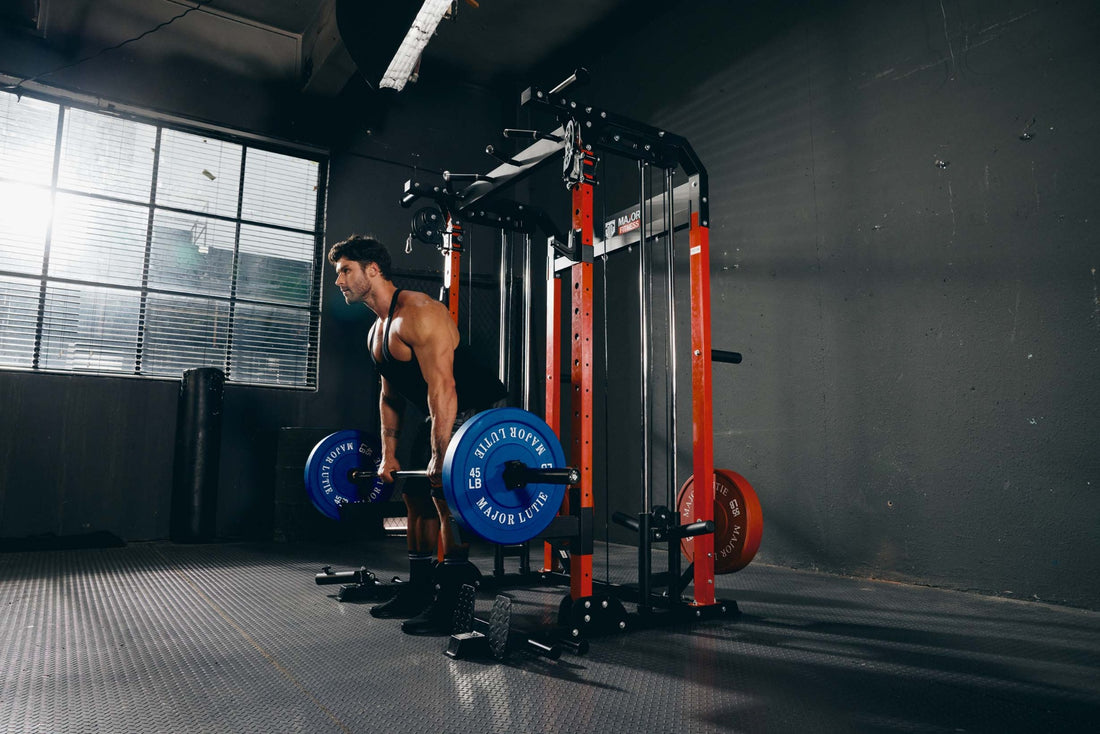
The timeless debate between sumo deadlift vs sumo squat continues to spark interest among fitness enthusiasts and weightlifters alike. Both exercises are highly effective for building lower body strength and muscle mass, but which one reigns supreme? Understanding the differences, benefits, and potential drawbacks of each can help you tailor your workout routine for maximum gains.
Understanding the Sumo Deadlift
The sumo deadlift is a variation of the traditional deadlift, characterized by a wider stance and hands placed inside the knees. This exercise primarily targets the hamstrings, glutes, and lower back, making it a staple in powerlifting and bodybuilding circles.
- Execution: To perform a sumo deadlift, start with your feet wider than shoulder-width apart and toes pointed slightly outward. Grip the barbell with your hands inside your knees. Keep your back straight, engage your core, and lift the bar by pushing through your heels, extending your hips and knees simultaneously. Return the bar to the ground with control.
- Benefits: The wider stance reduces the range of motion compared to a conventional deadlift, minimizing lower back strain and allowing for heavier lifts. It also places greater emphasis on the inner thighs and glutes.
- Considerations: Proper technique is crucial to avoid knee and hip injuries. Beginners should focus on mastering form with lighter weights before progressing.
Exploring the Sumo Squat
The sumo squat, often referred to as a wide-stance squat, targets the quadriceps, hamstrings, glutes, and adductors. This exercise is popular for its ability to enhance lower body strength, stability, and flexibility.
- Execution: Stand with your feet significantly wider than shoulder-width apart and toes pointed outward. Hold a dumbbell or kettlebell with both hands between your legs. Keeping your chest up and back straight, lower your body by bending your hips and knees until your thighs are parallel to the ground. Press through your heels to return to the starting position.
- Benefits: The sumo squat engages multiple muscle groups, promoting balanced development and enhancing athletic performance. It also improves hip and ankle flexibility.
- Considerations: Proper alignment of the knees and toes is essential to prevent injury. Ensure your knees track over your toes throughout the movement.
Sumo Deadlift vs Sumo Squat: A Comparative Analysis
While both exercises share similarities in their wide stance and emphasis on the lower body, they differ in mechanics and muscle activation.
| Aspect | Sumo Deadlift | Sumo Squat |
|---|---|---|
| Primary Muscle Groups | Hamstrings, Glutes, Lower Back | Quadriceps, Glutes, Adductors |
| Range of Motion | Reduced | Full |
| Equipment | Barbell | Dumbbell/Kettlebell |
| Form Focus | Hip Hinge | Knee Bending |
The sumo deadlift is more suitable for those looking to lift heavier weights while reducing lower back stress. It’s ideal for powerlifters and those aiming to build posterior chain strength. On the other hand, the sumo squat excels in developing overall lower body strength and flexibility, making it a great choice for athletes and those seeking functional fitness.

Integrating Both into Your Routine
Incorporating both sumo deadlifts and sumo squats into your workout regimen can provide a well-rounded approach to lower body training.
- Strength and Hypertrophy: Perform sumo deadlifts for lower rep ranges (3-5 reps) with heavier weights to build maximal strength. Incorporate sumo squats with moderate weights and higher reps (8-12 reps) to promote muscle hypertrophy.
- Periodization: Cycle between the two exercises in different phases of your training program. For example, focus on sumo deadlifts during a strength phase and sumo squats during a hypertrophy or functional training phase.
- Accessory Movements: Use variations like deficit sumo deadlifts and goblet sumo squats to target specific muscle weaknesses and enhance overall development.
Common Mistakes to Avoid
Avoiding common mistakes ensures you get the most out of your sumo deadlifts and sumo squats while minimizing the risk of injury.
- Improper Stance: Both exercises require a wide stance, but it’s important not to overdo it. Adjust your stance based on your hip mobility and comfort.
- Neglecting Core Engagement: Engaging your core stabilizes your spine and prevents lower back injuries. Brace your core throughout the movements.
- Rushing the Movement: Focus on controlled, deliberate movements to maintain proper form and muscle activation.
Conclusion
The battle of sumo deadlift vs sumo squat doesn’t have a one-size-fits-all answer. Both exercises offer unique benefits and can complement each other when incorporated thoughtfully into your training program. Whether your goal is to lift heavier, enhance athletic performance, or achieve balanced muscle development, mastering both movements can help you achieve your fitness aspirations. Experiment with both, listen to your body, and watch your lower body strength soar to new heights.



















